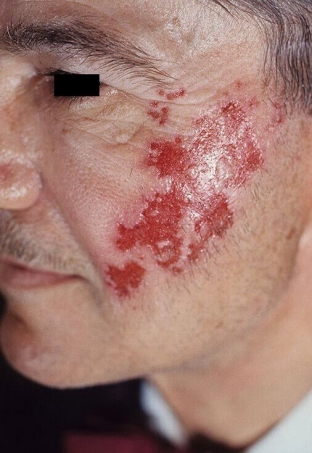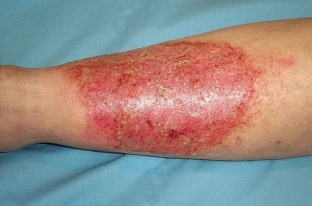Erysipelas caused by one of the most widespread infectious pathogens – group A streptococcus, therefore, is one of the most common bacterial infections. The causative agent of erysipelas is often present on the skin and mucous membranes of a person as part of the normal flora, and can also be transmitted by air or contact, easily penetrates the body through the slightest skin lesions, affects mainly women, is especially activated in the fall. The disease most often manifests itself on the skin of the legs, although it can also occur in other parts of the body. The treatment of legs affected by erysipelas requires long-term antibiotic therapy.
Features of the causative agent and forms of erysipelas
Erysipelas, or erysipelas, got its name from the intense red color of the affected area of the skin. This disease is included in the list of the most common bacterial infections, since it is caused by group A streptococcus, which is part of the human saprophytic flora. The pathogen enters the body through damage to the mucous membranes and skin, can enter the skin capillaries with blood flow from other foci of infection (for example, carious teeth).
Factors that contribute to the activation of streptococcus and the development of erysipelas
To activate streptococcus in the body, an individual predisposition, weakening of the body by other infections, and the age of the patient play an important role. Susceptibility to the pathogen increases under the following conditions:
- taking steroid hormones;
- chronic tonsillitis;
- chronic diseases of the oral cavity, nasopharynx;
- diseases of the venous and lymphatic systems;
- fungal infections;
- scars on the skin of various origins.
 Erysipelas most often affects the legs, then the face, upper limbs, chest. Streptococcus multiplies in the capillaries of the dermis, releasing toxins and enzymes into the blood, causing severe intoxication of the body.
Erysipelas most often affects the legs, then the face, upper limbs, chest. Streptococcus multiplies in the capillaries of the dermis, releasing toxins and enzymes into the blood, causing severe intoxication of the body.
Erysipelas can be classified according to the site of manifestation, widespread and localized, primary, repeated and recurrent, mild and complicated. According to the form of manifestation, erysipelas is:
- erymatous – a bright red spot appears with clear uneven edges, edematous, after its regression there is a small peeling and sometimes pigmentation;
- erymatous hemorrhagic – against the background of erythema, small or large, sometimes confluent hemorrhages are visible;
- erymatous bullous – in the area of erythema, small and large vesicles with serous contents appear, after opening they do not leave scars;
- bullous hemorrhagic – vesicles against the background of erythema have serous-hemorrhagic contents, open with the formation of erosions, leave scars and pigmentation, tissue necrosis often joins, complications in the form of phlegmon.

Erysipelas treatment, possible complications and prognosis
Therapy for erysipelas usually consists of prescribing a course of antibiotics - more often cephalosporins, some macrolides; sulfonamides with erysipelas are less effective. If relapses are observed, sequential prescription of antibiotics of different groups is recommended. If the course is not severe, the course is continued for 7-10 days, with persistent residual manifestations, antibiotic treatment can last up to 6 months, if the disease persists, antibiotic injections are repeated for two years.
Treatment of feet for erysipelas, in addition to antibiotic therapy, includes, if necessary, antihistamines, application of wipes with antiseptics on the skin (ointments are not recommended), detoxification courses, vitamin therapy.
Complications of erysipelas – it is most often phlegmon, tissue necrosis, inflammation of the veins. If the body is severely weakened, there is a risk of developing sepsis, with a recurrent course, there is lymphedema, elephantiasis.
With a typical course of erysipelas, the prognosis is favorable, but in patients with chronic diseases, as well as with frequent relapses and the development of complications, the prognosis is significantly worse.







Add a comment